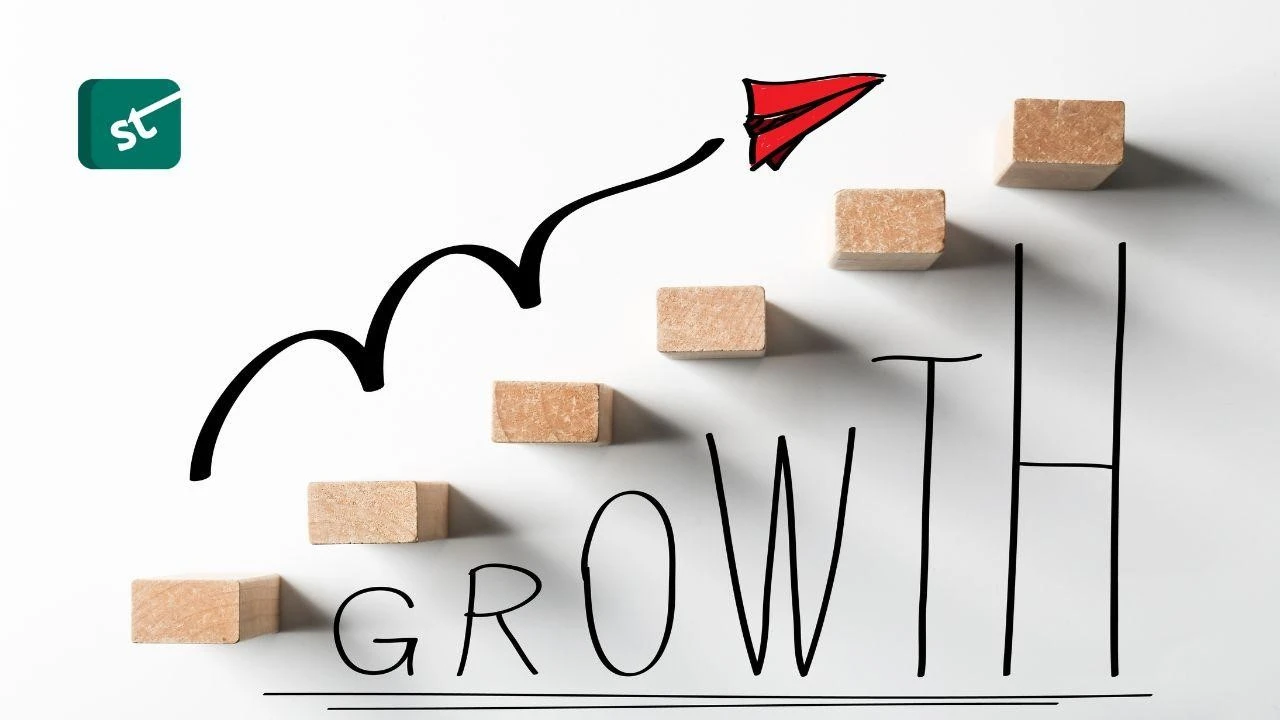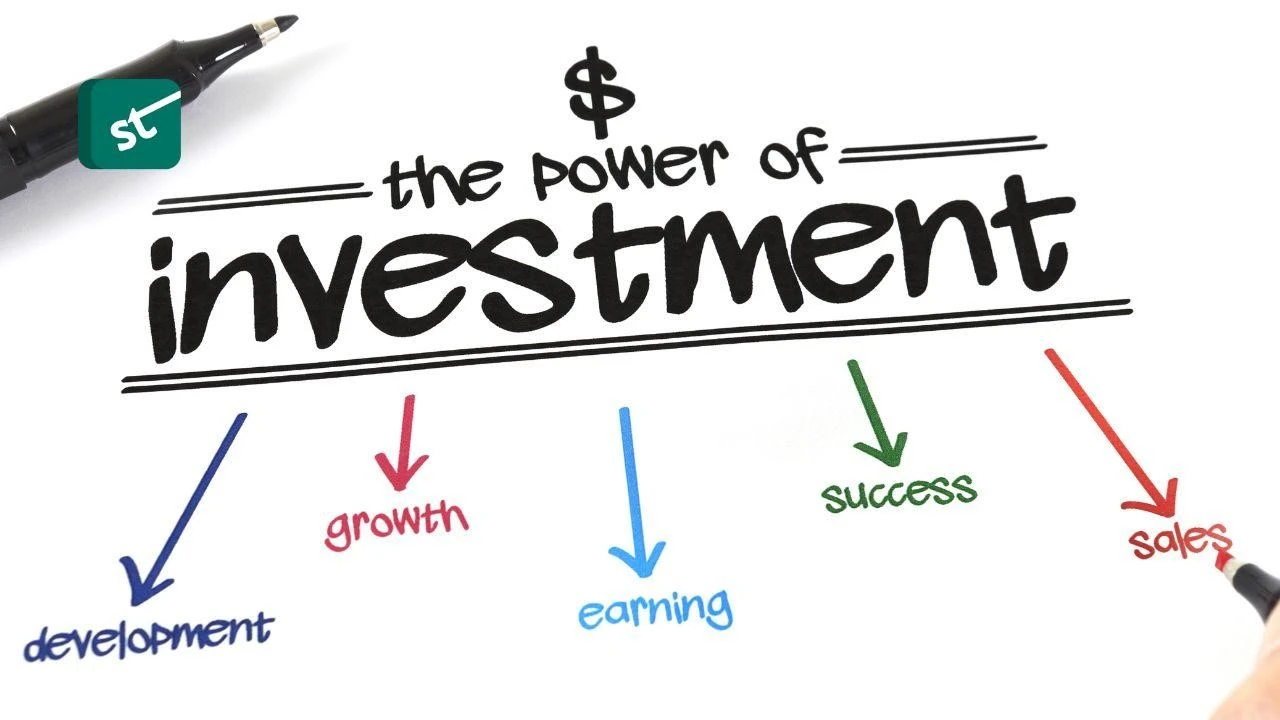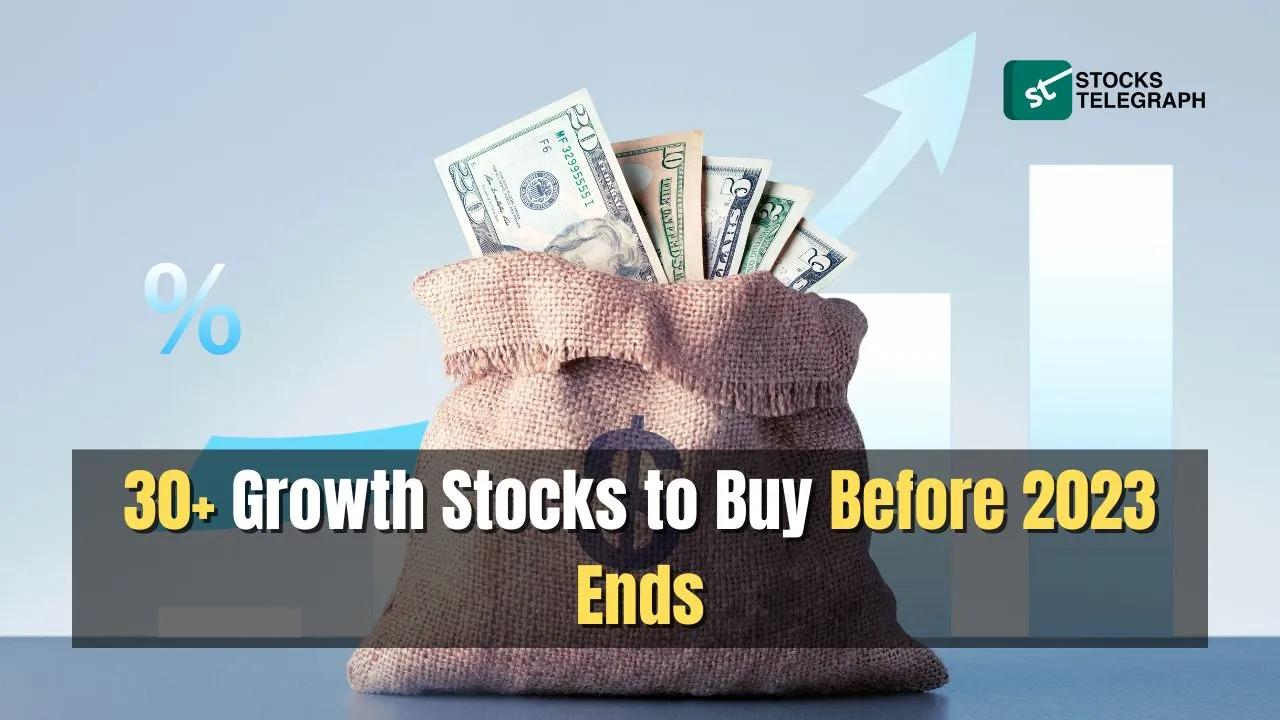Growth stock investment remains one of the two most popular forms of investment, with the other being of value stock investing.
Abiding by this philosophy, investors tend to pick the best stocks on the rise of companies for their portfolios.
And for this, they have ample reason to believe it will grow at a pace far higher than that of the wider market.
Because such companies are typically focused on growing their revenues and earnings to sustain wider expansion in the market, they do not pay dividends to their shareholders.
As a result, investors of this type are not interested in dividends in order to maximize their investment.
Earnings, therefore, are reinvested into the business in a manner that sustains further growth.
Some of the most successful investors have built up their fortunes in the form of capital gains that they achieved by timely investments in the best growth stock for 2023.
What Is a Growth Stock?
A growth stock refers to a type of investment that represents a company with substantial potential for expansion and increasing profitability.
These best stocks on the rise typically belong to companies operating in rapidly growing industries or possessing innovative technologies.
The best short-term growth stocks often prioritize reinvesting their earnings into research, development, and expansion rather than paying dividends to shareholders.
Investors are attracted to profitable growth stocks due to the potential for capital appreciation over time.
These stocks tend to exhibit higher volatility than value stocks but can generate substantial returns if the company’s growth prospects materialize.
Growth stocks require careful analysis and a long-term investment horizon to maximize potential gains.
What Is Growth Investing?
Growth investing is a strategy that focuses on investing in companies with substantial potential for rapid expansion and future earnings growth.
Unlike value investors, growth investors seek out companies with promising prospects for long-term growth, often in emerging industries or innovative sectors.
These companies typically reinvest their earnings into research and development, product expansion, or market penetration, aiming to increase their market share and revenue.
Growth investors believe that by identifying these high-growth companies early on and holding onto their investments over time, they can benefit from the increasing value of their shares.
It requires patience, research, and a forward-looking mindset to succeed in growth investing.
Best-Performing Growth Stocks
The world of growth stocks offers unparalleled opportunities for investors seeking exceptional returns.
These dynamic equities represent innovative companies at the forefront of industries poised for expansion.
With robust financials and visionary leadership, each of the following best growth stock continuously outpaces market expectations, delivering remarkable growth and portfolios.

-
SentinelOne, Inc
The first best growth stock for 2023 we present for this list is the software infrastructure company, SentinelOne, Inc. (NYSE: S).
SentinelOne’s Singularity Platform revolutionizes cybersecurity by swiftly detecting, preventing, and countering cyber attacks with exceptional speed and accuracy.
This powerful solution empowers organizations to safeguard endpoints, cloud workloads, containers, identities, and mobile and network-connected devices with utmost simplicity.
Boasting an extensive customer base of over 10,000 clients, SentinelOne has established itself as a trusted guardian of the present and future.
In a recent development, SentinelOne has launched a cutting-edge virtual data center in Australia.
This significant deployment closely follows the company’s achievement of Protected IRAP status for its renowned Singularity XDR platform.
The new data center will play a vital role in aiding local government agencies and organizations in adhering to data sovereignty regulations and fortifying the nation’s cyber defenses.
Hosted by strategic partner AWS, this center arrives at a critical juncture for Australia, as the Federal Government endeavors to enhance its cybersecurity strategy.
This will bolster incident response mechanisms, and tighten reporting regulations to match the ever-evolving threat landscape.
Despite macro challenges, SentinelOne continues to achieve remarkable growth and margin improvements, demonstrating its exceptional prowess across all aspects of its business.
SentinelOne’s recent quarter saw a remarkable surge in total revenue, soaring by over 70% to $133.4 million compared to the previous year.
Their annualized recurring revenue (ARR) also witnessed an impressive 75% boost, reaching $563.6 million by April 30, 2023.
These figures alone make SentinelOne one of the most profitable growth stocks.
Adding to its allure is the fact that the stock is currently trading at a price 44% lower than it was a year ago, making it an enticing prospect for investors seeking substantial long-term growth.
This presents a compelling opportunity to seize remarkable returns in 2023.
-
Palantir Technologies Inc.
The second best growth stock on our list is Palantir Technologies Inc., (NYSE: PLTR).
Palantir is a software company that develops applications that assist in detecting dataset patterns as well as signal intelligence sources.
For this reason, the company’s prime clients have been global intelligence agencies, however, this appears to be changing significantly.
The most impressive aspect of Palantir Technologies remains its phenomenal growth, despite the severe macroeconomic headwinds facing tech companies.
In its most recent quarter, PLTR recorded year-on-year revenue growth of a stellar 18% to $525 million.
On the surface, this figure alone seems highly compelling, but digging deeper we find much more to marvel at.
For instance, revenue from its commercial segment alone, in its recent quarter rose by 15%, which indicates a surge in corporate clients.
This boosts the company’s financial sustainability tremendously, as it would no longer rely upon intelligence agencies to a critical degree.
Moreover, the number of its customers in the US alone surged by a whopping 41%. For those chasing growth, these metrics are major green flags.
They indicate that Palantir is focused on long-term business relations, sure to lead to revenue and earnings boosts in the future.
From all the strong growth indicators, the cherry on top for Palantir is its attractive valuation.
PLTR is a strong best growth stock candidate as it is trading at a price 70% above that of 12 months ago.
This signals a strong buying opportunity for those looking to enjoy tremendous long-term growth.
-
Smith & Wesson Brands, Inc.
Number three on our best growth stock list is the weapons company Smith & Wesson Brands Inc., which also goes by SWBI.
As far as firearm design, manufacture and sales go, Smith & Wesson is among the top names in the world.
Even more impressive is the fact that it has incredible growth prospects, with some strong tailwinds in the short term.
SWBI’s recently reported quarterly results did not prove highly attractive, given that it saw a year-over-year decline of 20.1% to record sales of $144.8 million.
A large part of this poor performance had been due to inventory management problems following the extraordinary demand surge following Covid-19.
Now that the company faces a new inventory cycle this quarter, it is on track to continue its stellar growth trajectory.
With demand levels at an even higher point than last year, this could be further surpassed by next year, which makes fall under the best growth stock category in 2023.
Similarly, Smith & Wesson is supported by a number of strong tailwinds that further push its growth prospects to new heights.
The most significant is that of cooling inflation levels, which many economists strongly anticipate would cause a demand surge by customers.
The stock is clearly a treasure pot, ready to burst soon.
-
Pentair PLC
Next up, we take a look at Pentair PLC, a water solutions company that trades by PNR.
Pentair is essentially a flow technology company, with two prime segments that collectively deliver up to $4 billion in annual revenue.
Its consumer solutions segment primarily includes swimming pool-related products such as pumps, heaters, and filtration systems.
In this B2C segment, Pentair holds a leadership position throughout the North American market.
Similarly, its industrial segment lays focus on products such as membrane filtration, separation systems for factories, as well as bioreactors.
Despite its large scale of operations and robust market position as a leader, Pentair continues to boast high growth in performance.
In its March 2023 quarter, the company reported $1 billion in sales, up 3% year-over-year. Also, it posted an EPS of $0.78 against that of $0.71 in the same quarter last year.
PNR management is confident that the trend is likely to continue throughout the upcoming years.

PNR also plans to continue to push innovation and reimagine how it can Make Better Essential through its products and solutions, helping its customers move, improve and enjoy the water.
This is mainly due to strong demand trends in the industry, which Pentair, a market leader with an extremely strong product portfolio is highly able to meet.
Its position in the market also allows the company to absorb inflationary pressures and transmit the burden to its consumers.
This is all strengthened by a terrific backlog and a highly sustainable business model. And that helped Pentair PLC secure a place in our best growth stock list to consider in 2023.
-
Latham Group Inc.
The final stock on our best growth stock list for 2023 is Latham Group Inc., (NASDAQ: SWIM) a swimming pool manufacturer, designer, and marketer.
The company’s market scope covers North America and the Australia and New Zealand zones.
One typically does not think of a swimming pool company when exploring the best stocks on the rise. Latham Group, however, is a clear exception for a number of reasons.
For one, the company has defied the conventional B2B norms of the industry, by directly servicing homeowners through an enhanced focus on digital and social media marketing.
Similarly, its transition towards a fibreglass swimming pool gives it a tremendous marketing edge, and a high growth runway, given the low adoption rates of this superior pool class.
Latham’s high growth trajectory traces back to 2019 when it acquired Narellan, which was at the time the largest fiberglass pool manufacturer in Australia.
Ever since the company has dominated the market with its enhanced fiber-glass product offerings.
SWIM’s offerings entail simpler and low-cost installation and higher-quality pools that are far more aesthetically pleasing in nature. Revenue grew by 10.4% in 2022 to $695.7 million.
Furthermore, Latham’s business model stands as being highly robust and sustainable.
Especially when considering its recurring customers that regularly purchase high-margin pool products related to maintenance, design, and other aspects.
Given all these core strengths, Latham Group is a great steady riser to pick when seeking growth.
Here we have compiled a best growth stock list with 30 companies that we believe offer the most upside for a long-term growth.
| No. | Ticker | Company | Industry | Market Cap
(in millions) |
EPS Growth Next 5 Years | Performance (Year) |
| 1 | DAN | Dana Incorporated | Auto Parts | 2543.63 | 77.00% | 31.69% |
| 2 | SNCY | Sun Country Airlines Holdings, Inc. | Airlines | 1265.56 | 75.47% | 22.88% |
| 3 | RNR | RenaissanceRe Holdings Ltd. | Insurance – Reinsurance | 9696.93 | 72.20% | 28.32% |
| 4 | UAL | United Airlines Holdings, Inc. | Airlines | 17851.54 | 71.52% | 56.63% |
| 5 | NEWR | New Relic, Inc. | Software – Application | 4845.4 | 68.64% | 29.22% |
| 6 | CDRE | Cadre Holdings, Inc. | Aerospace & Defense | 819.09 | 65.70% | 6.32% |
| 7 | TMUS | T-Mobile US, Inc. | Telecom Services | 169283.56 | 65.51% | 4.57% |
| 8 | BEKE | KE Holdings Inc. | Real Estate Services | 18003.95 | 65.49% | 0.79% |
| 9 | WELL | Welltower Inc. | REIT – Healthcare Facilities | 39846.6 | 62.90% | -2.95% |
| 10 | ZS | Zscaler, Inc. | Software – Infrastructure | 19883.74 | 60.58% | -15.23% |
| 11 | DINO | HF Sinclair Corporation | Oil & Gas Refining & Marketing | 8718.18 | 58.80% | 1.69% |
| 12 | NARI | Inari Medical, Inc. | Medical Devices | 3145.53 | 58.30% | -20.94% |
| 13 | BMRN | BioMarin Pharmaceutical Inc. | Biotechnology | 16099.28 | 58.00% | -2.95% |
| 14 | BROS | Dutch Bros Inc. | Restaurants | 4957.94 | 56.90% | -15.77% |
| 15 | LUV | Southwest Airlines Co. | Airlines | 22641.19 | 56.76% | 4.67% |
| 16 | DASH | DoorDash, Inc. | Internet Content & Information | 30928.83 | 56.00% | 13.00% |
| 17 | PEGA | Pegasystems Inc. | Software – Application | 4608.69 | 55.90% | 14.21% |
| 18 | STNE | StoneCo Ltd. | Software – Infrastructure | 3846.4 | 55.20% | 56.11% |
| 19 | SSYS | Stratasys Ltd. | Computer Hardware | 1285.06 | 54.64% | 10.68% |
| 20 | VRT | Vertiv Holdings Co | Electrical Equipment & Parts | 9555.93 | 53.98% | 196.77% |
| 21 | MTCH | Match Group, Inc. | Internet Content & Information | 12647.16 | 40.00% | -33.60% |
| 22 | SEDG | SolarEdge Technologies, Inc. | Solar | 15036.06 | 32.95% | -3.13% |
| 23 | CEG | Constellation Energy Corporation | Utilities – Renewable | 31050.43 | 30.50% | 60.53% |
| 24 | PGR | The Progressive Corporation | Insurance – Property & Casualty | 77578.96 | 26.80% | 9.80% |
| 25 | CMG | Chipotle Mexican Grill, Inc. | Restaurants | 57712.8 | 25.20% | 60.92% |
| 26 | CRM | Salesforce, Inc. | Software – Application | 221952.56 | 25.12% | 30.35% |
| 27 | LLY | Eli Lilly and Company | Drug Manufacturers – General | 428545.19 | 24.60% | 33.08% |
| 28 | ASML | ASML Holding N.V. | Semiconductor Equipment & Materials | 291176.26 | 23.00% | 65.09% |
| 29 | NVDA | NVIDIA Corporation | Semiconductors | 1074172.16 | 21.20% | 189.74% |
| 30 | SAP | SAP SE | Software – Application | 170666.93 | 20.63% | 59.17% |
How To Find Growth Stocks
In the world of investing, growth stocks have the potential to deliver substantial returns to investors willing to seize the opportunities they present.
These profitable growth stocks represent companies that are expected to expand and increase their earnings at an above-average rate compared to the broader market.
Identifying such best short-term growth stocks requires a systematic approach and a thorough analysis of various factors.
Below, we outline a step-by-step guide to help you find growth stocks that align with your investment objectives.
-
Define Your Investment Strategy
Before embarking on the search for growth stocks, it is essential to clarify your investment strategy. Determine your risk tolerance, investment horizon, and financial goals.

This clarity will guide your search and enable you to focus on the right opportunities.
-
Fundamental Analysis
Conduct a comprehensive fundamental analysis of potentially best short-term growth stocks.
Evaluate their financial statements, earnings growth, revenue streams, and competitive advantage.
Look for companies with strong balance sheets, sustainable business models, and innovative products or services.
-
Industry and Sector Analysis
Identify promising industries and sectors with high growth potential. Analyze market trends, emerging technologies, and regulatory factors that could impact growth prospects.
Seek industries experiencing favorable macroeconomic conditions or undergoing transformational changes.
-
Management Team Assessment
Assess the management team’s track record, experience, and vision.
Look for leaders who have successfully executed growth strategies in the past and have a clear roadmap for the future.
Strong leadership is crucial for sustained growth and navigating challenges.
-
Evaluate Competitive Advantage
Identify companies with a sustainable competitive advantage.
This could be through unique intellectual property, strong brand recognition, economies of scale, or a differentiated business model.
A competitive advantage can provide a moat against competitors and drive long-term growth.
-
Analyze Growth Catalysts
Identify potential growth catalysts that could propel the company forward.
This could include new product launches, expanding into new markets, strategic partnerships, or favorable regulatory changes.
Evaluate the potential impact of these catalysts on revenue and earnings growth.
-
Technical Analysis
Supplement fundamental analysis with technical analysis to identify favorable entry and exit points.
Analyze price patterns, trends, and trading volumes to gauge market sentiment and timing. Technical analysis can help optimize your entry into growth stocks.
-
Diversification and Risk Management
Ensure proper diversification across different growth stocks and sectors to mitigate risk.

Even the most promising growth stocks can face challenges, so a diversified portfolio can help balance potential losses and gains.
Regularly review and rebalance your portfolio based on changing market conditions.
Risks of Growth Investing
Growth investing is a strategy that involves investing in stocks or other assets with high growth potential, aiming to achieve capital appreciation over the long term.
While growth investing can be lucrative, it is not without its risks. Here are some key factors to consider:
-
Market Volatility
Growth stocks are often more volatile than other investments. Their prices can experience significant fluctuations due to market conditions, economic factors, or industry trends.
Investors must be prepared for price swings and potential losses.
-
Valuation Concerns
Growth stocks are often priced based on high expectations for future growth.
If these expectations are not met, the stock’s valuation may become unsustainable, leading to a sharp decline in price.
Investors should carefully assess a company’s fundamentals and ensure that the stock is not overvalued.
-
Sector Concentration
Growth investing often involves focusing on specific sectors or industries that are expected to experience rapid expansion.
This concentration increases the risk because if the sector faces challenges or experiences a downturn, the investor’s portfolio may suffer.
-
Limited Dividends
Growth companies typically reinvest their profits into expanding their business rather than distributing dividends to shareholders.
This lack of regular income can be a disadvantage for investors seeking current income.
-
Lack of Diversification
Growth investors may concentrate their investments in a few high-growth stocks, which increases the risk of portfolio losses if any of those stocks perform poorly.
Diversification across different sectors and asset classes can help mitigate this risk.
Growth Vs. Value Stocks
Here’s a table highlighting the key differences between Growth and Value Stocks:
| Description | Growth Stocks | Value Stocks |
| Definition | Companies with high potential for future earnings growth. | Companies that are undervalued relative to their intrinsic worth. |
| Characteristics | High price-to-earnings ratio (P/E), focus on revenue growth. | Low P/E ratio, emphasis on dividends and steady cash flows. |
| Investor Preference | Attractive to investors seeking capital appreciation. | Appealing to investors looking for stable income and downside protection. |
| Volatility | Tend to have higher volatility due to optimistic expectations. | Often less volatile due to their established operations and conservative approach. |
| Investment Horizon | Suitable for long-term investors with higher risk tolerance. | Appealing to investors with shorter-term goals and lower risk tolerance. |
| Sector Examples | Technology, Biotech, and Emerging Markets. | Utilities, Financials, and Mature Industries. |
| Key Metrics | Revenue growth, earnings per share (EPS) growth. | Price-to-earnings ratio, price-to-book ratio. |
| Valuation | Based on future earnings potential and market sentiment. | Based on fundamental analysis and relative valuation. |
| Market Performance | Tend to outperform during bull markets and economic expansions. | Can perform well during market downturns and economic contractions. |
| Examples | Amazon, Tesla, and Netflix. | ExxonMobil, Coca-Cola, and IBM. |
Identify Trends and The Companies Driving Them
In today’s technologically dynamic world, emerging tech trends shape industries. From AI to renewable energy, they redefine possibilities, fueling progress and transforming our world.
-
E-Commerce
The rise of e-commerce continues to reshape the retail landscape, with companies like Amazon, Alibaba, and Shopify leading the charge.
These companies have revolutionized the way we shop, offering convenience, competitive pricing, and a vast selection of products.
-
Digital Advertising
As traditional advertising methods wane in effectiveness, digital advertising has taken center stage.
Google, Facebook, and Amazon dominate this space, using advanced targeting techniques and data analytics to deliver personalized ads to consumers, driving revenue and shaping consumer behavior.
-
Digital Payments
The shift towards a cashless society has propelled companies like PayPal, Square, and Stripe to the forefront of digital payments.
With seamless transactions and enhanced security, these companies are revolutionizing the way we pay, making online and mobile purchases more convenient and secure.
-
Cloud Computing
The demand for cloud computing services has skyrocketed, with Amazon Web Services, Microsoft Azure, and Google Cloud leading the way.
These companies provide scalable infrastructure, storage, and computing power, enabling businesses to streamline operations, enhance collaboration, and reduce costs.
-
Cord-Cutting and Streaming Entertainment
Traditional cable TV is losing ground to streaming services like Netflix, Hulu, and Disney+.
These companies are reshaping the entertainment landscape, offering a vast array of content on-demand, driving cord-cutting trends, and changing how we consume media.
-
Remote Work
The COVID-19 pandemic accelerated the adoption of remote work, with companies like Zoom, Slack, and Microsoft Teams enabling virtual collaboration and communication.
As remote work becomes a long-term trend, these companies continue to innovate, shaping the future of work.
-
Electric Vehicles
The transition towards sustainable transportation is driving the growth of electric vehicle (EV) companies like Tesla, NIO, and Rivian.
These companies are revolutionizing the automotive industry, offering emission-free alternatives.
They also offer driving advancements in battery technology, charging infrastructure, and autonomous driving.

Prioritize Companies with Competitive Advantages
When selecting investments, it’s crucial to prioritize companies with competitive advantages that set them apart from their competitors.
These advantages create barriers to entry and enhance the company’s long-term sustainability. Here are three key subheadings to consider:
-
Network Effects
Companies with network effects possess a unique advantage as their product or service becomes more valuable as more users join the network.
This creates a powerful cycle where increased usage attracts more users, reinforcing the company’s dominance.
Examples include social media platforms, online marketplaces, and ride-sharing services.
-
Scale Advantages
Large-scale operations provide companies with significant competitive advantages.
Economies of scale enable them to produce goods or services more efficiently, reducing costs and increasing profitability.
They can negotiate better deals with suppliers, invest in research and development, and outspend competitors on marketing efforts.
This leads to market dominance and higher barriers for new entrants.
-
High Switching Costs
Companies that impose high switching costs on customers enjoy a competitive advantage.
Switching costs refer to the expenses, effort, or time required for customers to switch from one company’s product or service to another.
Businesses achieve this advantage through proprietary technology, customer lock-in, or contractual obligations.
Examples include software providers with complex integrations, subscription-based services, or businesses with extensive loyalty programs.
By prioritizing companies with these competitive advantages, investors position themselves for long-term success.
These companies are better equipped to withstand competition, generate sustained growth, and deliver superior returns to shareholders.
Find Companies with Large Addressable Markets
Identifying companies with substantial addressable markets is crucial for investors seeking high growth potential.
These companies operate in industries with vast opportunities for expansion and revenue generation.
By targeting such companies, investors can tap into long-term value creation and substantial returns.
-
Definition of Addressable Markets
An addressable market refers to the total feasible revenue opportunity available to a company within its specific industry or niche.
It represents the maximum revenue potential a company can achieve by meeting the needs of its target customers.
-
Identifying Growing Industries
Look for companies operating in industries experiencing rapid growth and market expansion.
Emerging sectors like renewable energy, artificial intelligence, e-commerce, and healthcare technology offer substantial addressable markets due to increasing demand and technological advancements.
-
Market Size and Potential
Assess the overall market size and potential customer base for a company’s products or services.
Evaluate factors such as population demographics, consumer preferences, and global trends to gauge the scalability and long-term viability of the addressable market.
-
Competitive Advantage
Seek companies with a competitive advantage that enables them to capture a significant share of their addressable market.
This advantage could be proprietary technology, unique intellectual property, established distribution networks, or strong brand recognition.
-
Scalability and Growth Opportunities
Analyze a company’s ability to scale its operations and expand its market reach.
Look for businesses that can adapt to changing market dynamics and capitalize on emerging opportunities to penetrate new customer segments or geographical regions.
-
Market Saturation and Disruption
Consider whether the company operates in a market that is already saturated or prone to disruptive innovations.
While large addressable markets are attractive, the potential for saturation or disruption can affect a company’s growth prospects and market share.
Conclusion
In the ever-evolving world of investing, growth stocks continue to captivate the imagination of investors seeking outsized returns.
These dynamic entities, fueled by innovation and disruptive ideas, possess the power to redefine industries and reshape the future.
With their potential for exponential growth and the allure of being at the forefront of innovation, growth stocks offer a unique opportunity for investors to be part of future success stories.
However, with great potential comes inherent risk.
It is crucial for investors to exercise caution, conduct thorough research, and diversify their portfolios to navigate the uncertainties of this exhilarating but volatile realm.
Ultimately, for those who understand the risks and have the appetite for adventure, growth stocks can be a powerful catalyst for financial prosperity.
Investing in growth stocks is also a thrilling journey into the unknown.
FAQs
Should You Buy Growth Stocks?
Investing in growth stocks can be a rewarding strategy, offering the potential for substantial returns. However, it’s important to consider the risks.
Growth stocks often come with higher volatility and uncertainty, requiring a long-term perspective.
Thorough research, diversification, and a clear understanding of your risk tolerance are crucial before diving into this high-potential, high-risk investment approach.
How Do You Value Growth Stocks?
Valuing growth stocks requires a comprehensive approach. Look beyond traditional metrics like P/E ratios and focus on future potential.
Assess the company’s competitive advantage, industry trends, and management’s track record. Consider revenue growth, market share, and innovation.
Evaluate the scalability of the business model and the addressable market. Finally, weigh risks and projected returns before making informed investment decisions.
Why Do Growth Stocks Underperform When Interest Rates Rise?
When interest rates rise, growth stocks tend to underperform due to several reasons.
Firstly, higher interest rates make borrowing costs more expensive, impacting the profitability of growth companies heavily reliant on debt.
Secondly, investors shift their focus to safer, income-generating investments, causing a rotation away from high-growth stocks.
Additionally, higher rates diminish the present value of future cash flows, reducing the attractiveness of growth stocks.
When Will Growth Stocks Recover?
The timing of growth stock recovery remains uncertain, influenced by various factors. Market conditions, economic indicators, and investor sentiment will play crucial roles.
While past trends indicate growth stock resilience, predicting exact timing is challenging.
Patience, diligent analysis, and adapting investment strategies will guide investors toward potential recovery opportunities in the dynamic market landscape.
